How and when to prune holly bushes to achieve the best results
Knowing when to prune holly bushes and how to get the job done right is the key to jolly holly

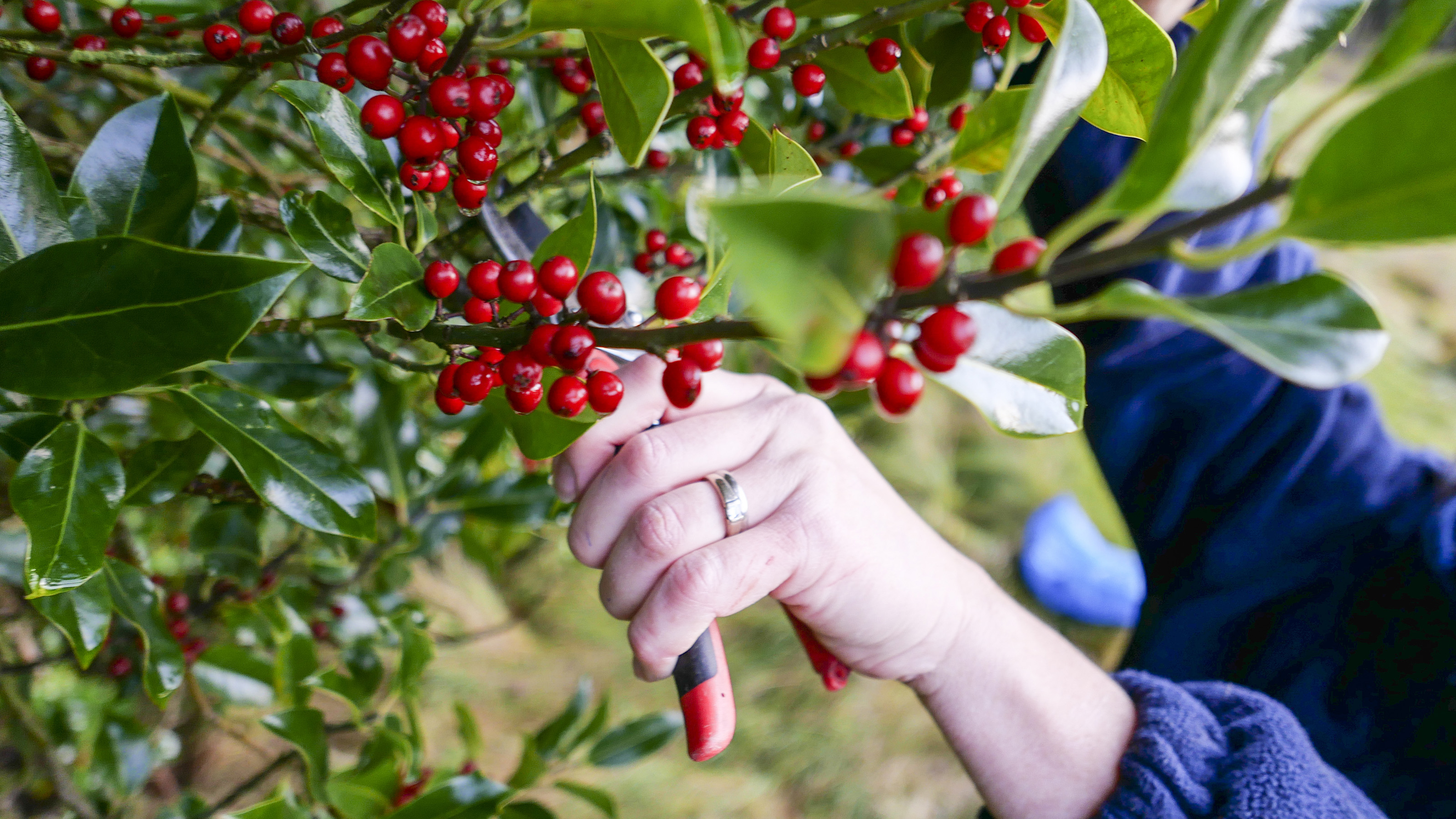
Knowing when to prune holly bushes is a good idea if you want to keep yours looking its best throughout the year. Although pruning is usually best done in spring, there are other times of year to consider completing this task too.
The method of pruning holly (ilex) will keep your dense plant in the shape you want and prevent it from becoming too large for your garden. Not to mention any clippings make great natural, seasonal decorations.
Holly is a well-known plant, usually a tree, shrub or hedge with prickly leaves and red berries in fall and winter, making it a striking feature of the winter garden, especially when covered with a frosting of snow.
But not all hollies have the spiky leaves or red berries familiar from Christmas cards. There are smooth-leaved types like ‘J.C. van Tol’, gold (‘Golden Queen’) or silver (‘Silver van Tol’) variegated ones and even some with yellow and orange berries.
Holly is one of the best evergreen trees and looks stunning in topiary shapes like pyramids and spheres. But although it’s not fussy about soil or position, you need to prune holly just right to get those dramatic topiary shapes and gorgeous festive berries to adorn your garden.

When to prune holly bushes at the best time
Ideally, spring is the best time to prune holly bushes. The weather is mild, and you can get rid of die-back caused by hard winter conditions, advises the RHS. Although spring is probably the perfect time, you can try pruning shrubs from late winter onward when plants are dormant.
If your holly is an evergreen shrub, you may want to cut off some holly sprigs for your seasonal decorations too – this also counts as pruning. It can be better to do this sparingly, as taking too much from the same plant in one go may reduce the following year’s berry crop.
If a plant has damaged or sickly-looking foliage, it’s also best to prune them out as soon as you spot it.
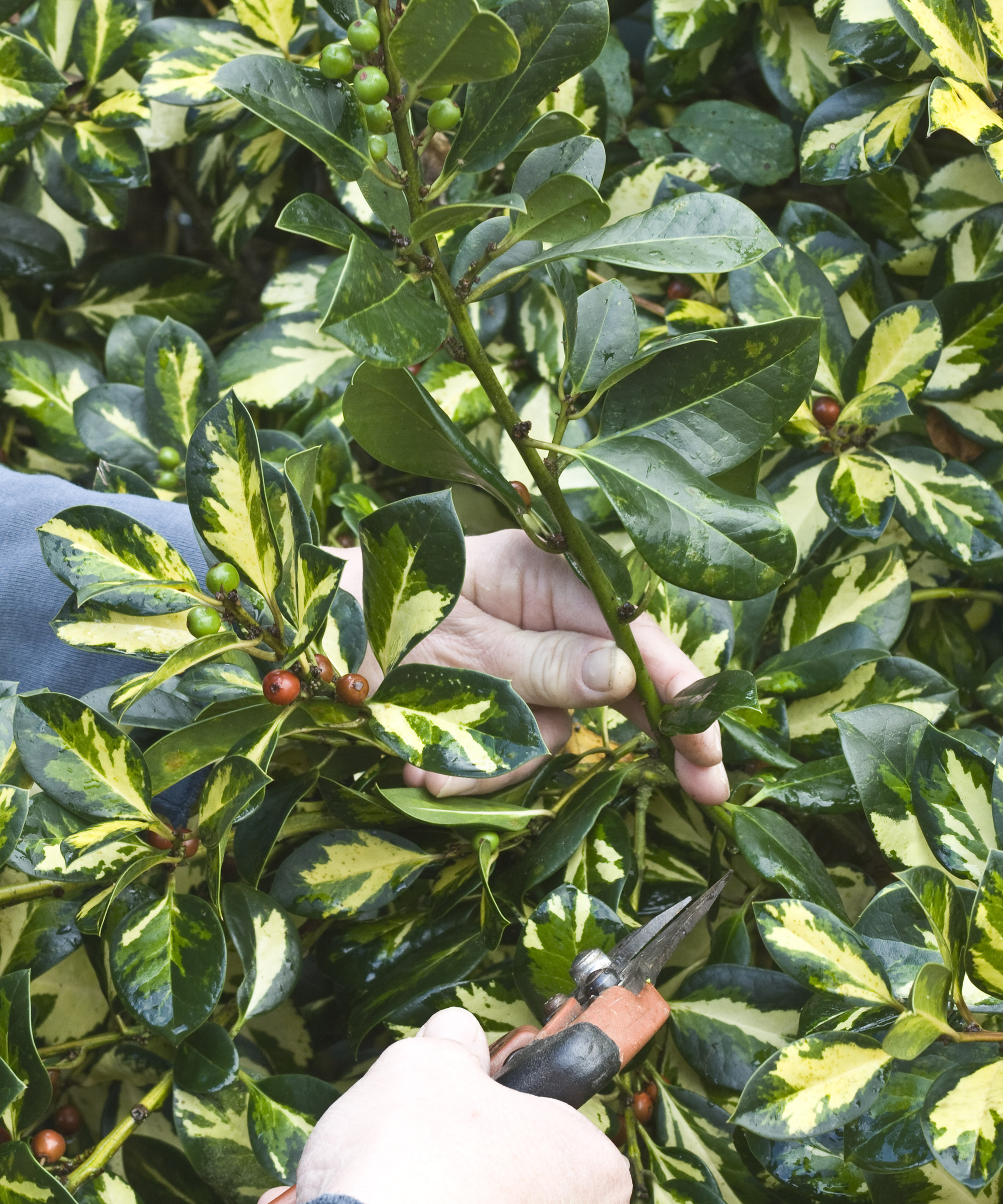
Other times of year to prune holly bushes
Apart from late winter to spring pruning, you should shear established evergreen hedging plants or topiary holly bushes with the best hedge trimmer a couple of times in summer, to crisp them up and keep their shape.
Wait until after your holly bush has produced its small white flowers and has begun to form berries before pruning it. There is some flexibility, as long as you don’t leave pruning too late in the season.
It’s best to finish it by mid to late summer, otherwise the fresh new growth produced by pruning could be hit by frost, and the plant could suffer.
The good news is that learning how to prune holly is fairly low-risk as it's a pretty tough customer, so it will usually bounce back, even if you've pruned it at slightly the wrong time of year.
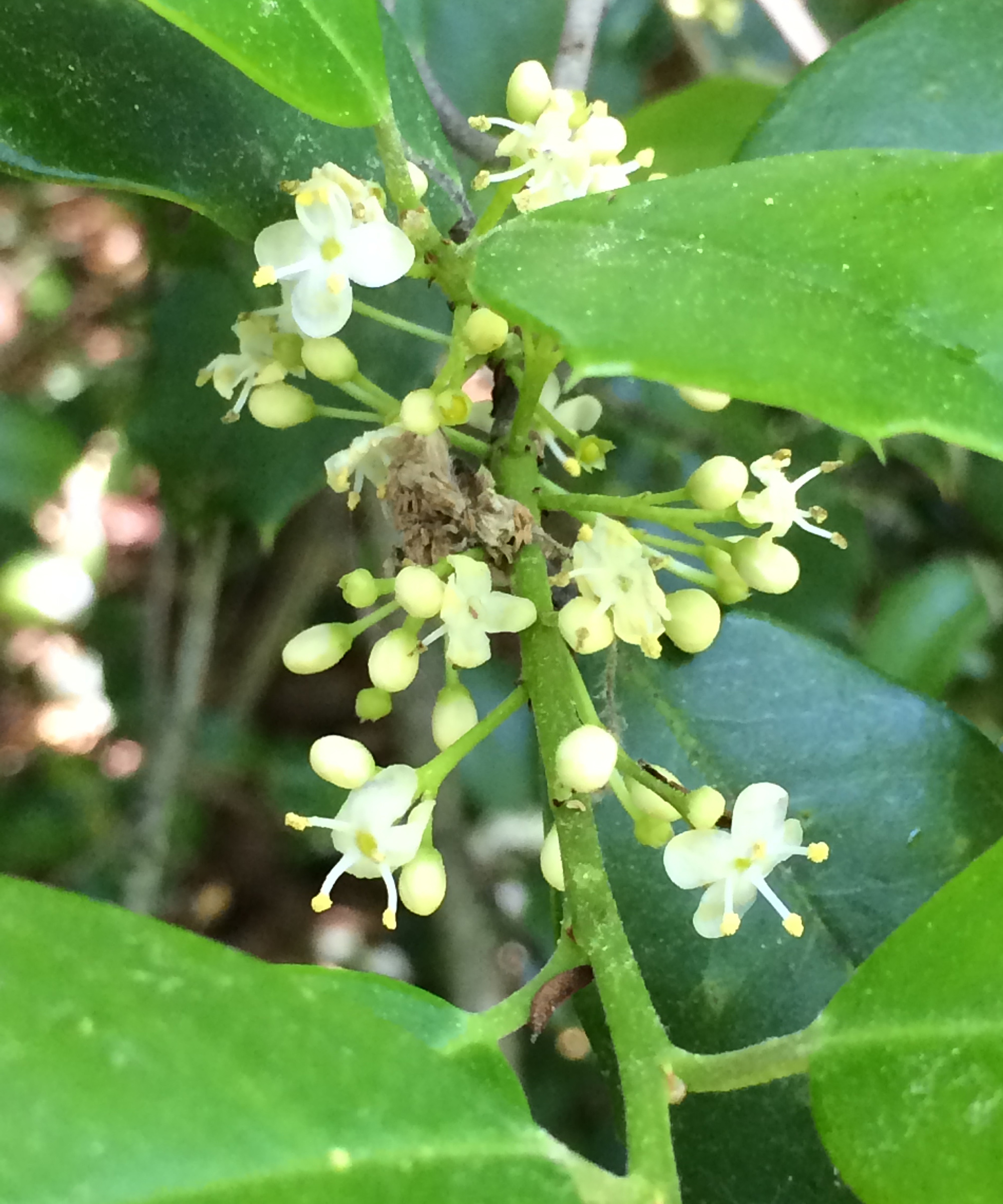
How to prune holly bushes in 6 easy steps
An unpruned holly left to itself will become extremely large, eventually becoming a tree with berries up to 65ft (20m) tall. You also need to prune if you want to produce a hedge, or topiary shape.
What you will need:
- Pruners
- Ladder (for tall plants)
- Sharpened shears (for hedging or topiary)
- Loppers (for branches ½-1in (1-2.5cm) in diameter)
- Pruning saw (for larger branches more than ½-1in (1-2.5cm)
- Strong gloves/gauntlets
- Eye protection (especially for prickly-leaved bushes)
- Tarp or old sheet for collecting leaves
- Place a tarp or old sheet underneath to catch the leaves, saving your fingers from the spiny foliage.
- Stand back and look at the general shape of the plant and decide what you’re aiming for. For a hedge or topiary holly, a light clip over with sharp garden shears should be fine.
- Next, the three ‘D’s: anything dead, diseased or damaged should be cut off.
- Then, remove any weak, or crossing or rubbing branches, which can lead to wounds appearing on the wood where disease can enter the plant.
- After that, prune to keep the shape you’re aiming for. Prune stems rather than leaves, to encourage growth. Make a clean cut with your secateurs just above a leaf bud.
- Feeding and mulching plants after pruning will help encourage new growth.
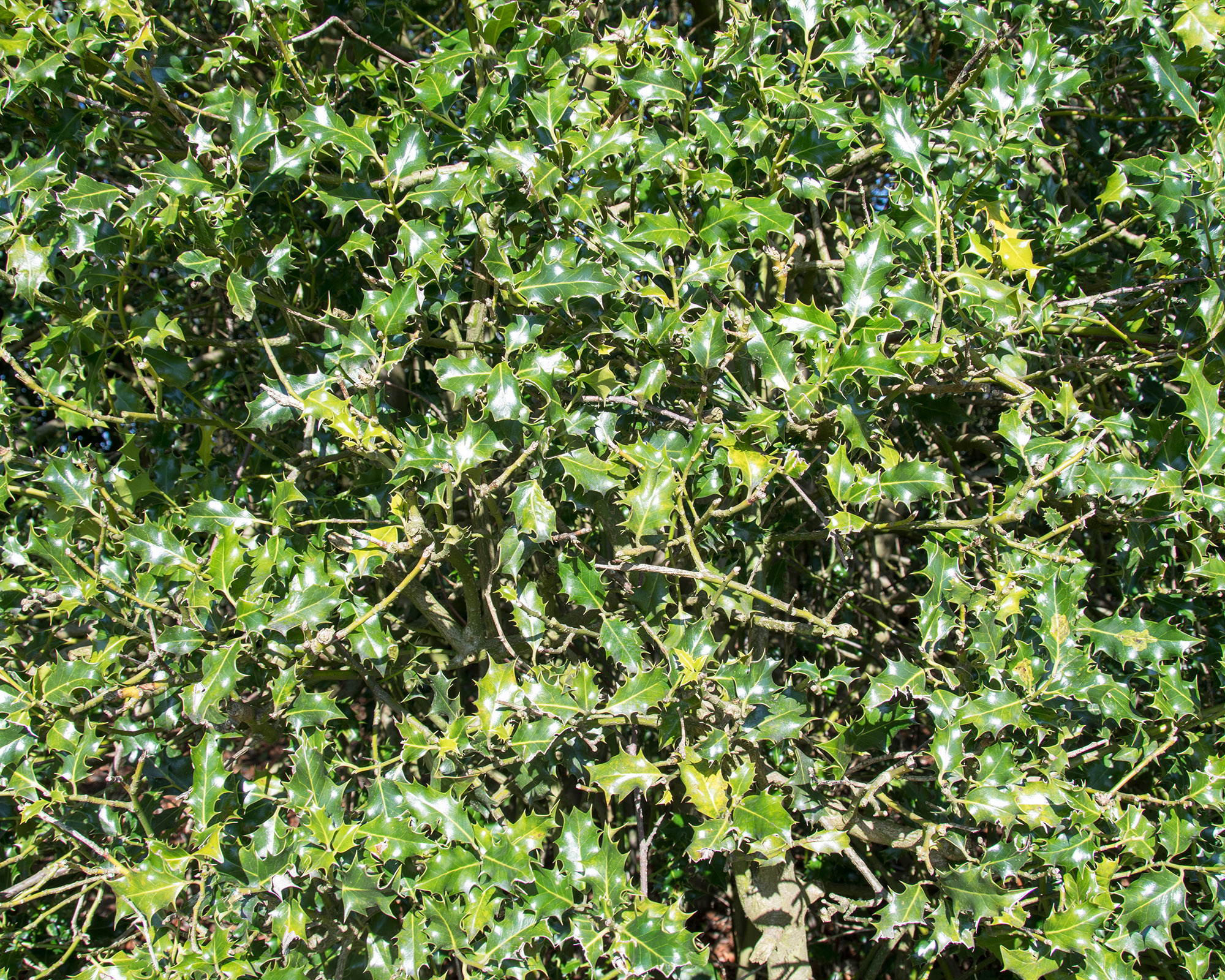
Why it's important to prune holly bushes
Holly is extremely clippable, and looks stunning in cool geometric shapes such as pyramids, spheres or cubes. It’s much easier to establish a topiary shape while the plant is still young.
Another reason for pruning is if you spot green foliage on a variegated holly, like Ilex aquifolium ‘Silver Queen’, you must cut any pure green out promptly, otherwise the whole bush will ‘revert’ – i.e. go back to plain green, and you’ll lose the beautiful variegated coloring.
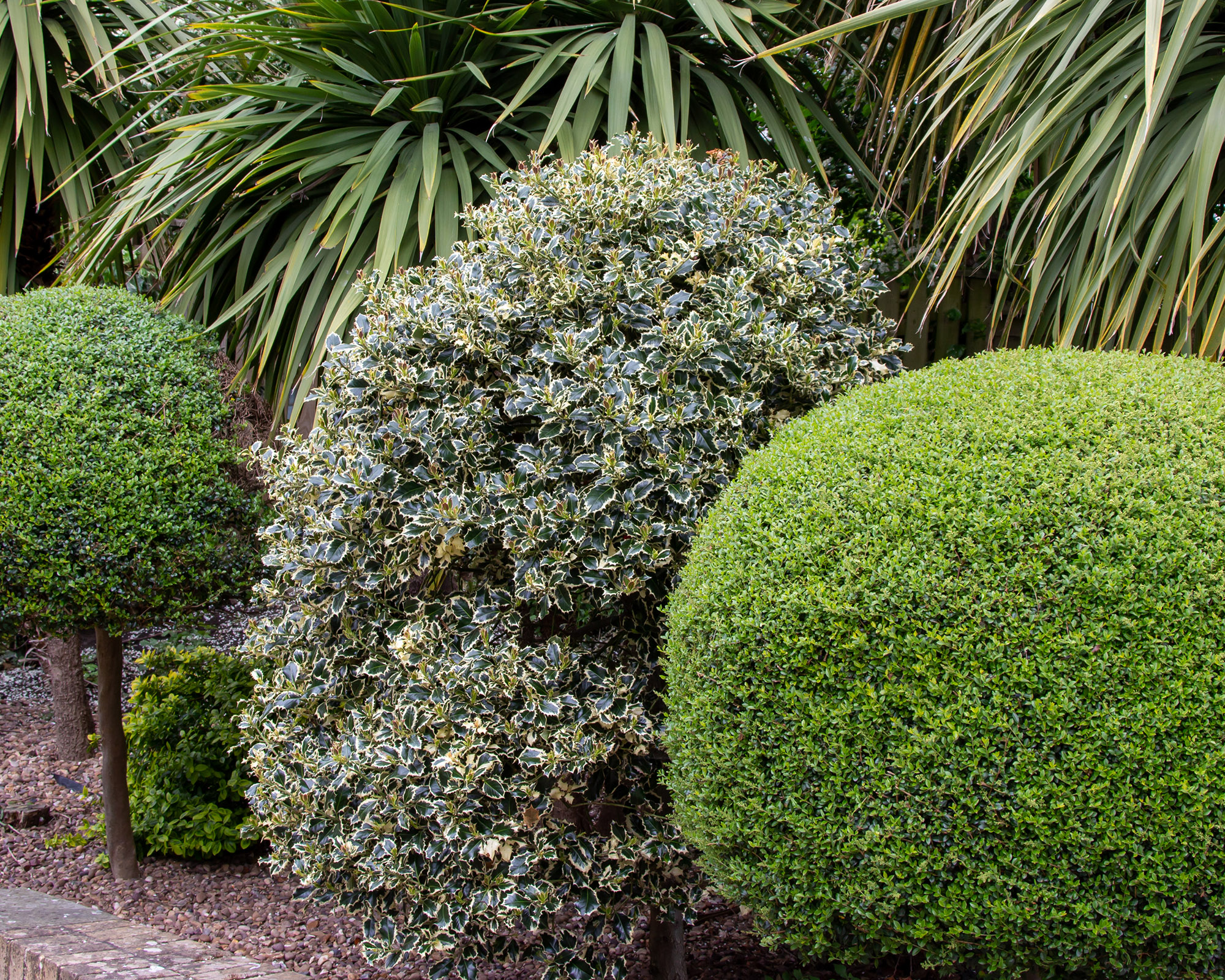
How often should you trim holly bushes?
The RHS advises you should clip holly plants twice or more in the growing season. For holly hedges or topiary, it’s best to prune once a year in spring, then again later in the summer to keep the shape looking good.
When it comes to when to prune holly bushes, this can be quite light once the shape is well-established. In summer, shorten new foliage by cutting back to just above a bud, to show off the ripening berries, keep the shape and restrict growth. Keep your trimming light if berry production is your main aim.
Naturally you’ll be ‘pruning’ again in winter when you snip holly branches for your DIY Christmas decorations and Christmas wreath ideas. Cut sparingly and choose a mild day if you can – clipping a prickly-leaved holly with fingers numbed by cold, won’t induce a festive mood!
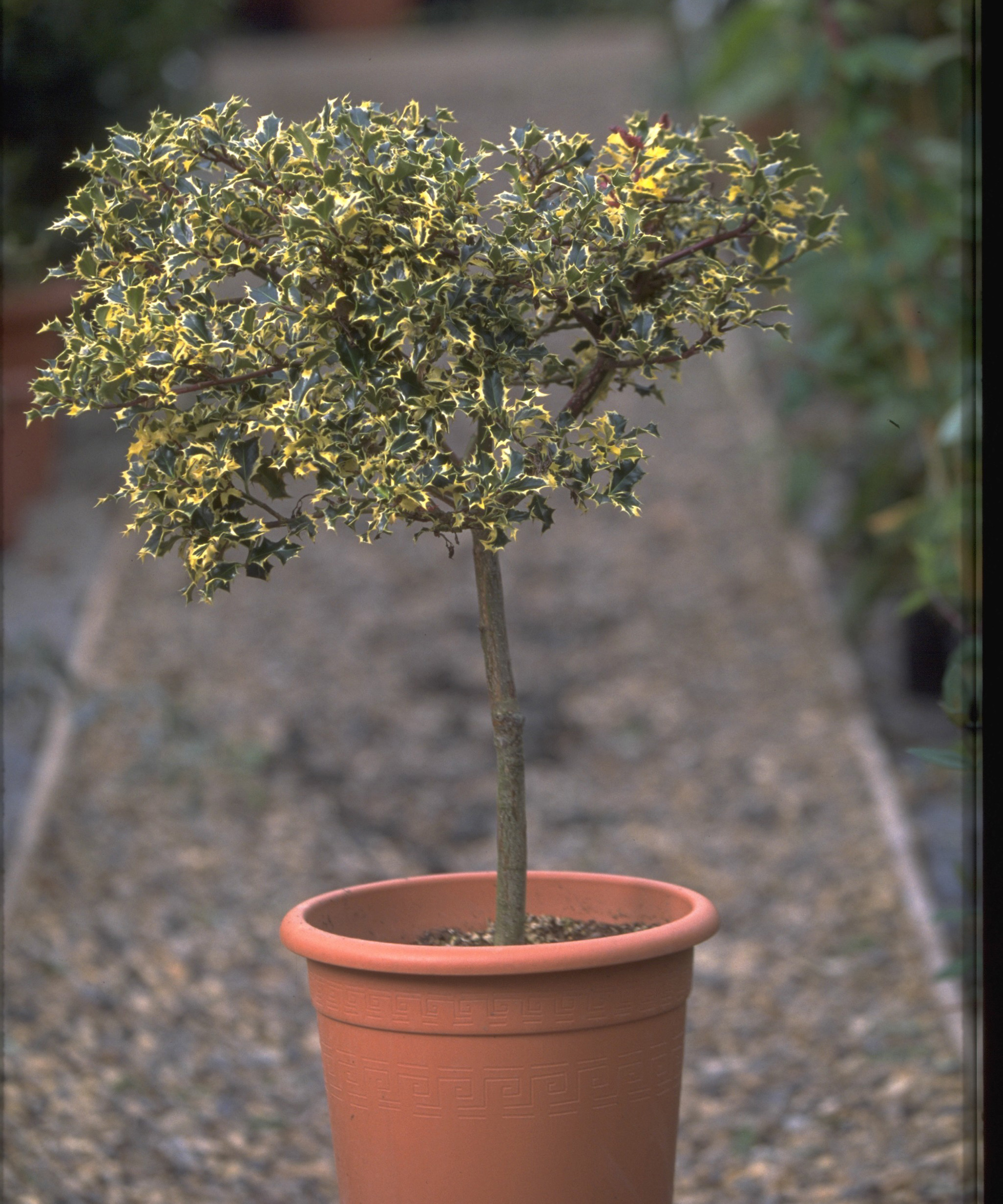
How far back can you cut holly?
If you need to, you can cut holly back hard, almost to the base and it will eventually recover. However, it’s not ideal, as it may look ugly for a while, as you’ll expose the inner stems which are often bare as a result of receiving less sunlight than the outer branches.
If you’re renovating an old or overgrown holly, prune it hard in late winter or spring, but stagger the process over several years. Prune half of the oldest stems to 2-3in (5-8cm) from the ground and cut back the remaining stems by half. The following year, repeat the same process for old stems.
Similar to when you prune forsythia back hard, you may have to wait a couple of years for it to fully recover. Much better to prune holly plants while young, to maintain a good shape and enjoy a wealth of those gorgeous festive berries come Christmas.

What happens if you don't prune holly bushes?
With the exception of deciduous varieties like I. x altaclerensis, holly is not a fast growing tree, but unpruned it will become a sizeable one, the last thing you want if you were after a tree for small gardens.
So you need to know when to prune holly bushes early in its life to restrict the growth, or it will end up overshadowing your space. Plus, pruning a giant holly is extremely tricky, using tall ladders and with the added possible risk of injury from the spines (if it’s a prickly-leaved variety), and almost impossible to shape as you’d like once it’s got that big.
It could be expensive, too, as you may well decide you prefer to pay an arborist to do it. And once pruned, you may have to wait a couple more years before it’s back in full berry-producing mode.

Geraldine is a gardener and garden writer, who has worked for over 12 years in historic public gardens and private gardens around London. She has written articles for Easy Gardens, Which? Gardening and Women’s Weekly Gardening Special magazines and for gardeningetc.com. She also edited the book ‘Britain’s Favourite Plants’ for the RHS.
